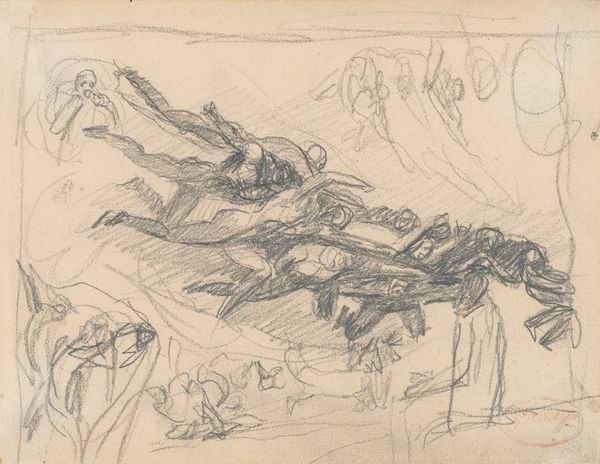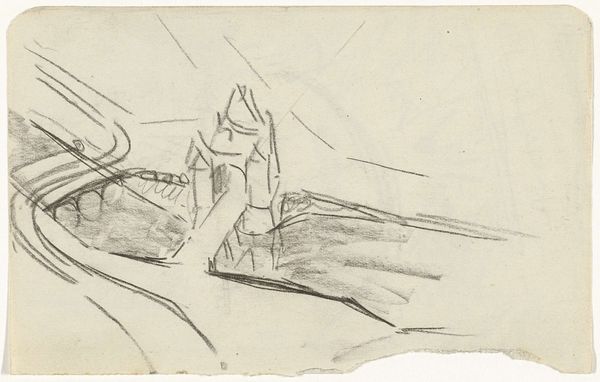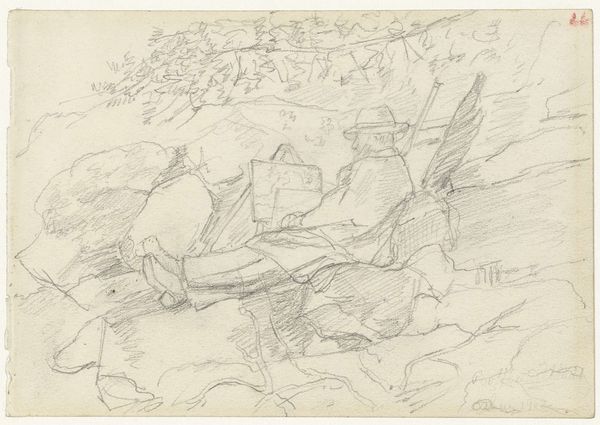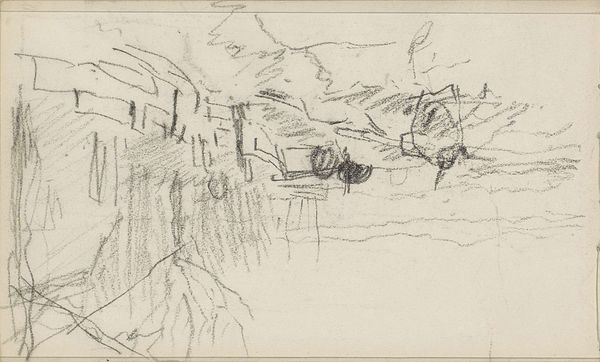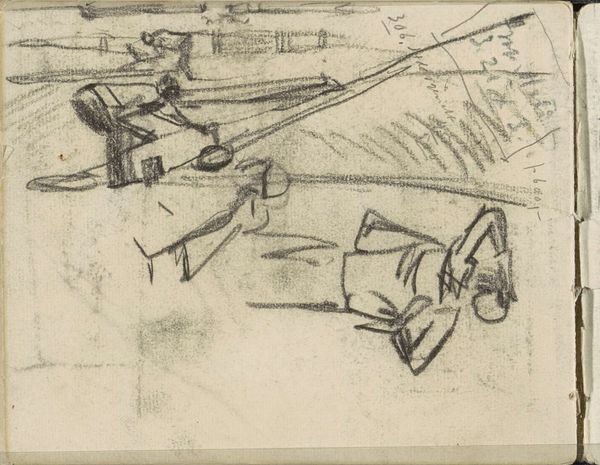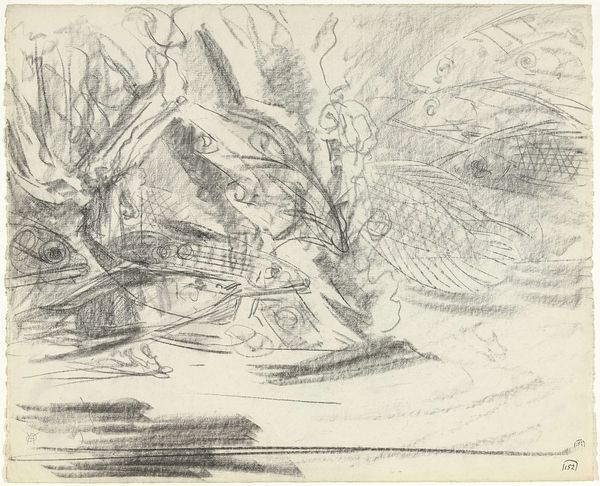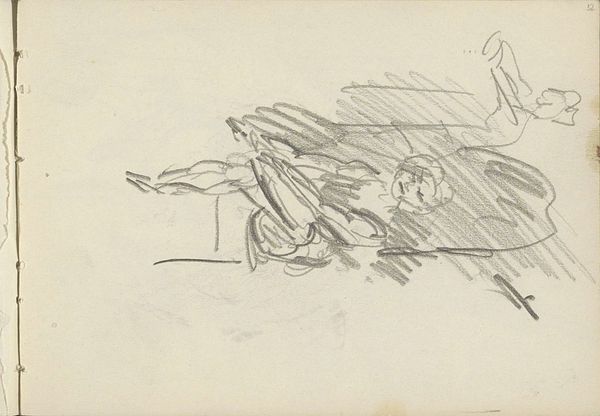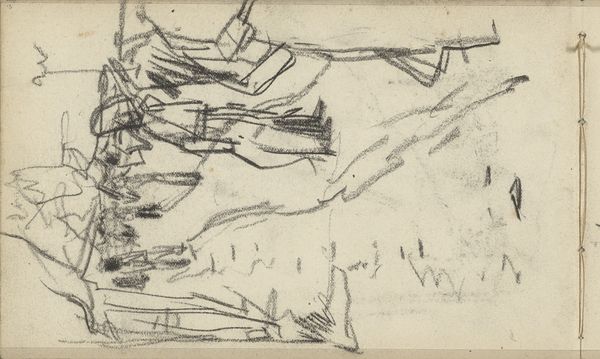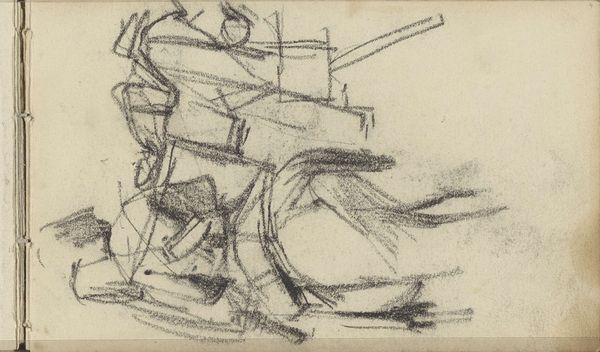
drawing, pencil
#
drawing
#
light pencil work
#
ink drawing
#
pen sketch
#
pencil sketch
#
personal sketchbook
#
ink drawing experimentation
#
pen-ink sketch
#
pencil
#
sketchbook drawing
#
storyboard and sketchbook work
#
sketchbook art
#
realism
Dimensions: height 230 mm, width 404 mm
Copyright: Rijks Museum: Open Domain
Editor: This drawing, titled "Kreeften," or "Lobsters" in English, is by Gerrit Willem Dijsselhof and it's dated between 1876 and 1924. It's currently housed in the Rijksmuseum. It's a pencil and ink drawing that feels really raw and unfinished, like a page torn from a sketchbook. What do you see in this piece? Curator: What I find compelling is the explicit evidence of artistic labour. It’s not just a polished final product; it’s a study. Note the rapid pencil strokes and the deliberate use of shading – they indicate a process of observation, a recording of form and texture. Think of the artist, handling the pencil, repeatedly observing the lobster's form, working and reworking lines, understanding its materiality. How might this preliminary sketch differ from a finished work intended for consumption? Editor: I suppose in a finished work, he'd be thinking more about the audience, about what looks aesthetically pleasing. Here, it feels like it's just him and the lobsters. Curator: Precisely. This drawing brings us closer to the artist's hand, to the actual labor involved in representation. Consider the societal role of these sketches during this period. Were they merely studies, or did they also function as a form of documentation? Might Dijsselhof have intended to elevate the status of such working drawings? Editor: That’s a good point. Maybe he saw value in showing the process itself, not just the polished result. The materials become part of the statement. Curator: Indeed. The inherent worth of "high art" versus "low craft" are challenged. Here, labor and materiality are placed on center stage. Does examining it through this lens change your initial perception of its rawness? Editor: It does. Knowing it's about the process elevates it, makes me think about the act of creation more, the physical effort behind it. Thanks! Curator: And I appreciate you noting how the sketch foregrounds the artistic choices about the subject of representation in its natural state, stripped of ornamentation or artifice. Thank you for sharing.
Comments
No comments
Be the first to comment and join the conversation on the ultimate creative platform.
